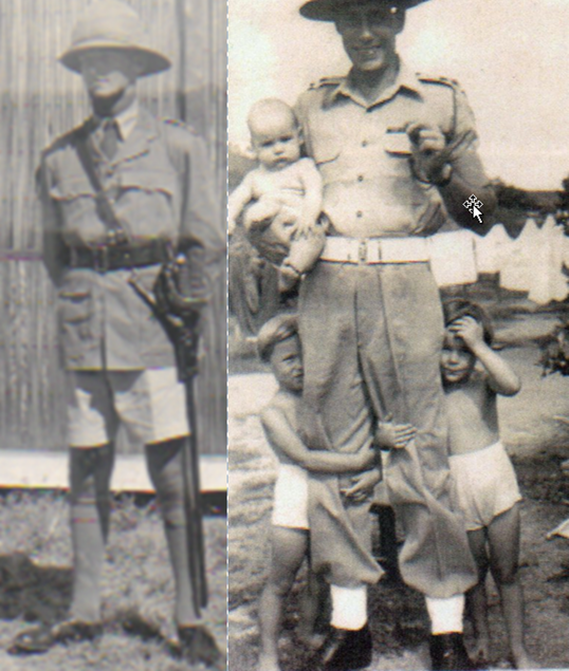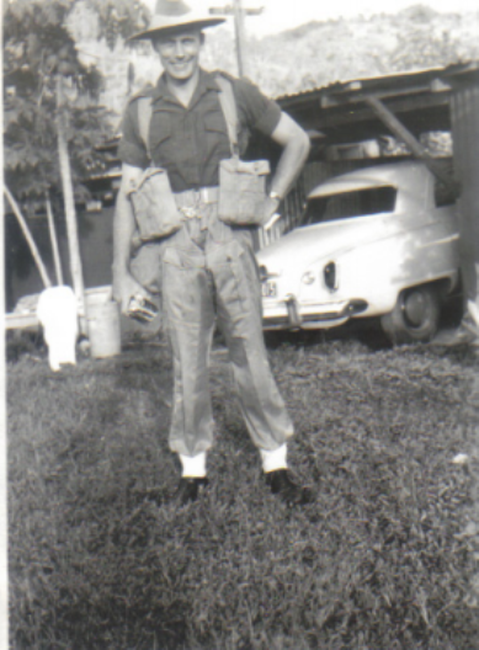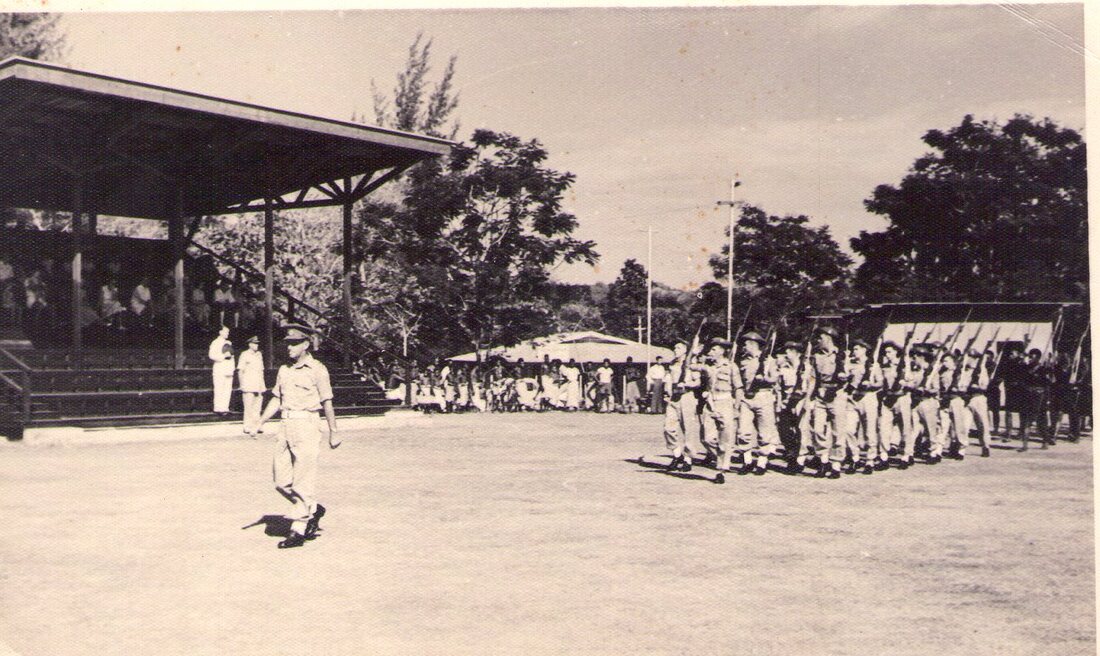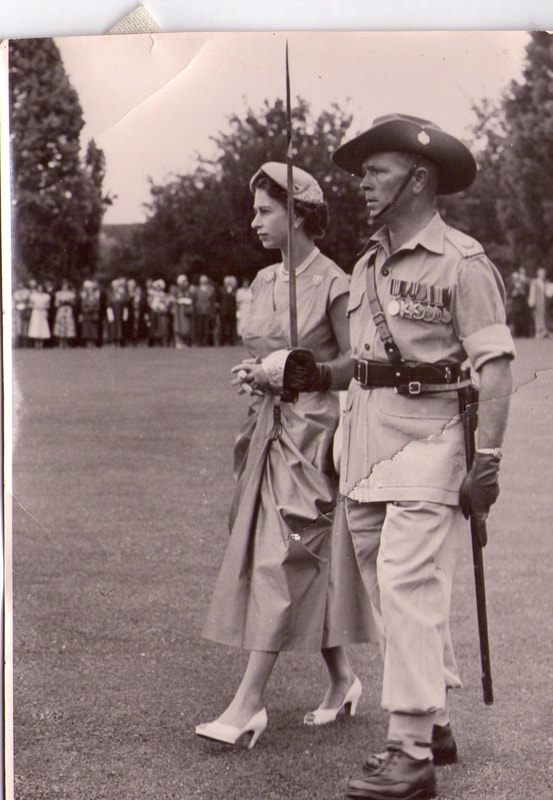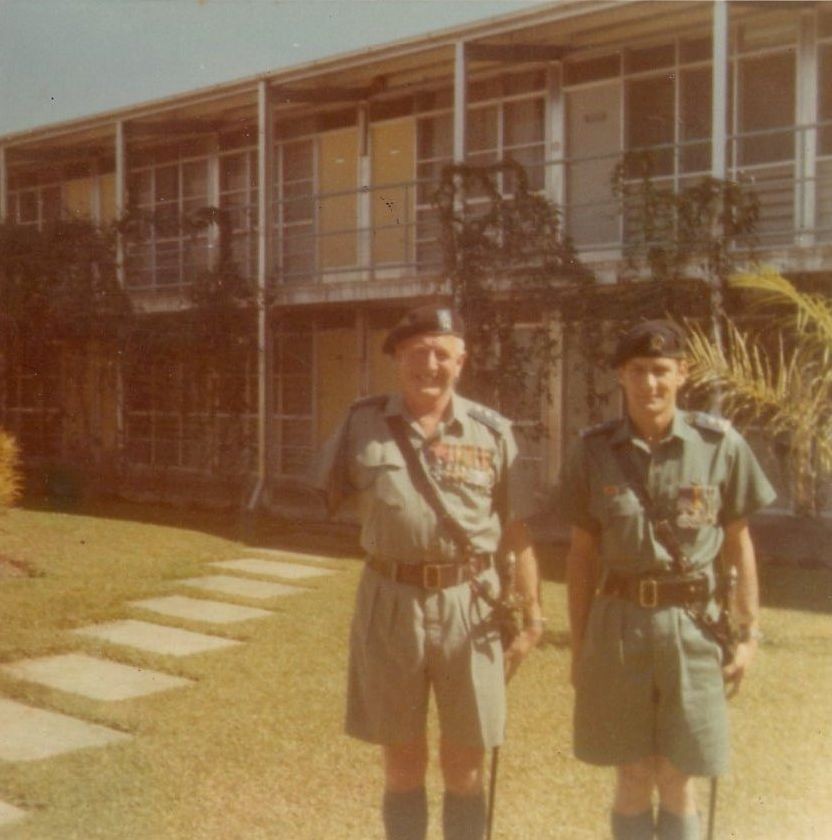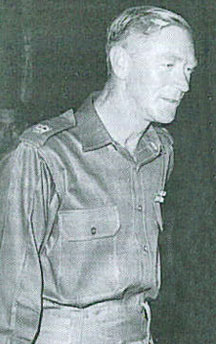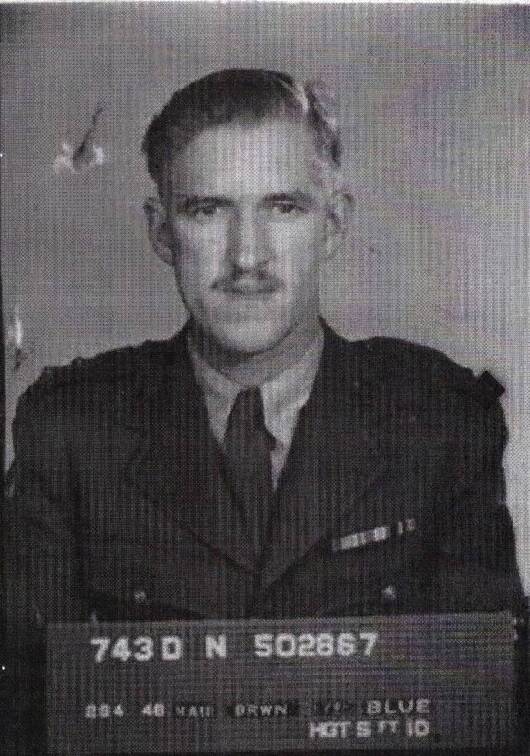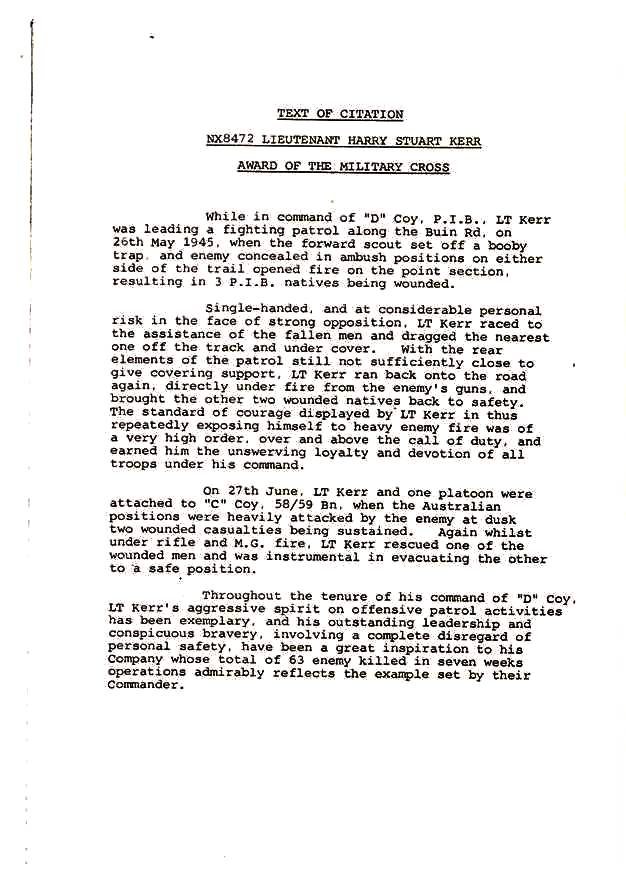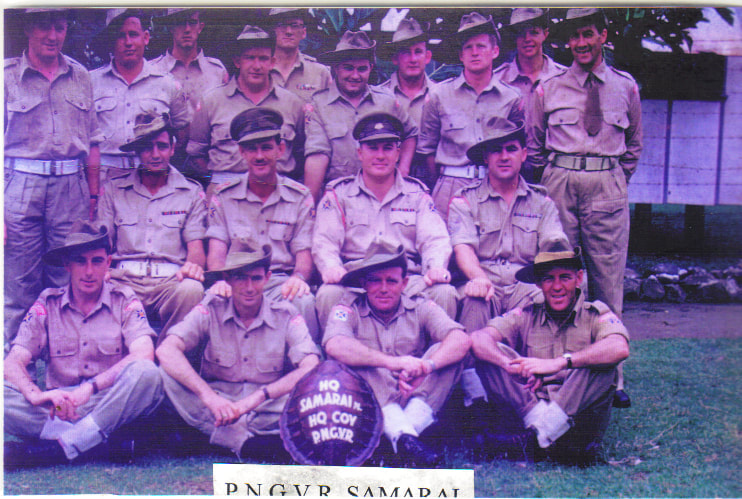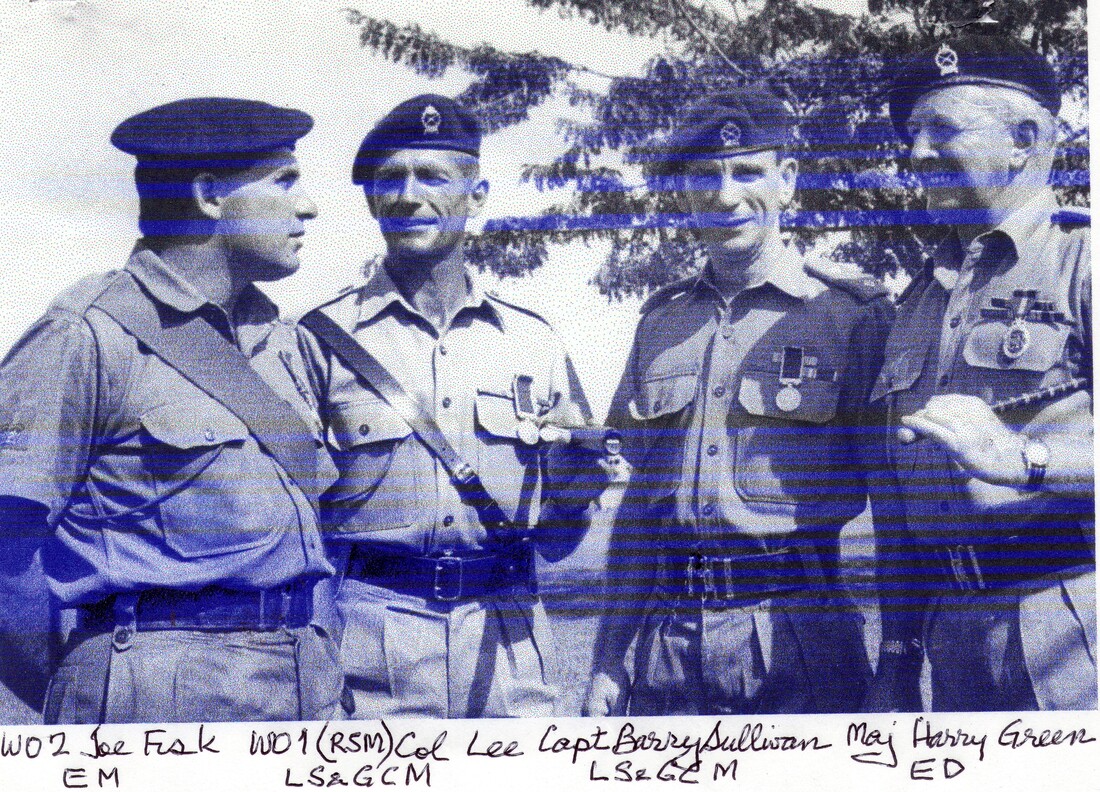HQ PNGVR
Lt Col Maddern MBE
CO PNGVR 1951-53
The second photo taken in Port Moresby.
CO PNGVR 1951-53
The second photo taken in Port Moresby.
Lt Col Maddern at his house in Port Moresby prior to his departure for Kokoda in December, 1951.
61/4 Tough Days on the Kokoda Trail.
When a party from Port Moresby, comprising 10 members of the PNGVR, and 5 civilians, walked from Sogeri, over the Owen Stanley Ranges and down into Kokoda, in 61/4 days, during the holidays, without carriers and each with a 50 lb pack, they confounded the critics, who declared that it could not be done by untrained people.
This was the Kokoda Trail – the incredibly broken, mountainous and bleak trek which both the Japanese and the Australian forces twice (coming and going) climbed over in 1942. The tracks then made have largely disappeared, and the Moresby Christmas Party found the going exceedingly rough and exhausting. They lived mostly on the biscuit and bully beef they carried and their overnight camps were most primitive. But they got through, carrying all gear and food, and all but two marched the last three miles into Kokoda in smart military style, and at a route-march pace. The other two came in later, and were not too exhausted to tackle a highly welcome meal put on by Mr and Mrs Yeoman, of the Government station.
The only one who did not carry a pack was Miss Velacott-Jones, of the ABC. She took along two native carriers.
Practically all collected feet blisters and a few stiff muscles. Lt Col N.P Maddern, CO of the PNGVR who led the party, came home with no blister, and loudly praising the magnificent qualities of an Australian Army boot.
Those who made the trek were:- PNGVR Lt Col N.P. Maddern, Sgt B. Parker (Army) and CMF members Tom Crotty, W. Wyatt, J. Grose, R. Cowell, Max Little, J. Fisher, A. North. G. Straughen. Guide Pte Kora, of Kokoda. Civilians. Messrs Frank Vincent, Kenneth Wood, Ray Harris. J.W. Bax, and Miss K. Vellicott-Jones
This is an extract from the Pacific Islands Monthly, January 1952.
61/4 Tough Days on the Kokoda Trail.
When a party from Port Moresby, comprising 10 members of the PNGVR, and 5 civilians, walked from Sogeri, over the Owen Stanley Ranges and down into Kokoda, in 61/4 days, during the holidays, without carriers and each with a 50 lb pack, they confounded the critics, who declared that it could not be done by untrained people.
This was the Kokoda Trail – the incredibly broken, mountainous and bleak trek which both the Japanese and the Australian forces twice (coming and going) climbed over in 1942. The tracks then made have largely disappeared, and the Moresby Christmas Party found the going exceedingly rough and exhausting. They lived mostly on the biscuit and bully beef they carried and their overnight camps were most primitive. But they got through, carrying all gear and food, and all but two marched the last three miles into Kokoda in smart military style, and at a route-march pace. The other two came in later, and were not too exhausted to tackle a highly welcome meal put on by Mr and Mrs Yeoman, of the Government station.
The only one who did not carry a pack was Miss Velacott-Jones, of the ABC. She took along two native carriers.
Practically all collected feet blisters and a few stiff muscles. Lt Col N.P Maddern, CO of the PNGVR who led the party, came home with no blister, and loudly praising the magnificent qualities of an Australian Army boot.
Those who made the trek were:- PNGVR Lt Col N.P. Maddern, Sgt B. Parker (Army) and CMF members Tom Crotty, W. Wyatt, J. Grose, R. Cowell, Max Little, J. Fisher, A. North. G. Straughen. Guide Pte Kora, of Kokoda. Civilians. Messrs Frank Vincent, Kenneth Wood, Ray Harris. J.W. Bax, and Miss K. Vellicott-Jones
This is an extract from the Pacific Islands Monthly, January 1952.
WO Jim Moodie, B Coy ARA Instructor, leads the parade at Rabaul on VP Day, 1955. The District Commissioner is JR Foldi
MAJ M.A. Bishop, MM, escorting
HRH Queen Elizabeth.
Port Moresby
HRH Queen Elizabeth.
Port Moresby
L-R: MAJ Harry Green and LT Joe Urqhart
Lieutenant Harry S Kerr MC
As a Lieutenant, Harry Kerr (NX8472; NX502867) had won a Military Cross. He enlisted in the AIF in November 1939 and was posted to 8 Company of the 2/1 Infantry Battalion, embarked in January 1940, arriving in Palestine in February 1940. In October 1940 he transferred to the 16 Brigade Anti-Tank Company and saw his first action at Bardia in January 1941,followed by Tobruk.
His unit was attached to the King's Own Dragoon Guards and the 3 Hussars for long range patrol activities from Fort Aghiela until the withdrawal to Tobruk in April 1941. He served in Tobruk until 16 Brigade was relieved in October of that year. His sub-unit was absorbed into the 2/I Anti-Tank Regiment and he served as a troop sergeant with this unit in Palestine and Syria, returning to Australia in August in 1942. Kerr attended the Officer Cadet Training Unit (OCTU) at Woodside passing out fourth out of 300 candidates and after further training at Puckapunyal, he was commissioned a Lieutenant.
After a posting to Greta with the Anti Tank Training Regiment and a stint with the 103 Anti-Tank Regiment at Darwin, he was posted to the Papuan lnfantry Battalion (PIB) in December l944 and commanded D Company during the Bougainville campaign. He was discharged from the AIF in October 1946 and joined the Department of Native Labour. Lieutenant HS Kerr enlisted on 1 June 1951 and posted as OC Mortar Platoon and allocated regimental number 1/59163. The Mortar Platoon was in name only and although there was one 3-inch (75 mm) mortar in store at Port Moresby, the platoon was not formed until several years later with the raising of Support Company at Port Moresby.
As a Lieutenant, Harry Kerr (NX8472; NX502867) had won a Military Cross. He enlisted in the AIF in November 1939 and was posted to 8 Company of the 2/1 Infantry Battalion, embarked in January 1940, arriving in Palestine in February 1940. In October 1940 he transferred to the 16 Brigade Anti-Tank Company and saw his first action at Bardia in January 1941,followed by Tobruk.
His unit was attached to the King's Own Dragoon Guards and the 3 Hussars for long range patrol activities from Fort Aghiela until the withdrawal to Tobruk in April 1941. He served in Tobruk until 16 Brigade was relieved in October of that year. His sub-unit was absorbed into the 2/I Anti-Tank Regiment and he served as a troop sergeant with this unit in Palestine and Syria, returning to Australia in August in 1942. Kerr attended the Officer Cadet Training Unit (OCTU) at Woodside passing out fourth out of 300 candidates and after further training at Puckapunyal, he was commissioned a Lieutenant.
After a posting to Greta with the Anti Tank Training Regiment and a stint with the 103 Anti-Tank Regiment at Darwin, he was posted to the Papuan lnfantry Battalion (PIB) in December l944 and commanded D Company during the Bougainville campaign. He was discharged from the AIF in October 1946 and joined the Department of Native Labour. Lieutenant HS Kerr enlisted on 1 June 1951 and posted as OC Mortar Platoon and allocated regimental number 1/59163. The Mortar Platoon was in name only and although there was one 3-inch (75 mm) mortar in store at Port Moresby, the platoon was not formed until several years later with the raising of Support Company at Port Moresby.
WO2 Joe Fisk, RSM Colin Lee (LSGCM) CAPT Barry Sullivan (LSGCM) MAJ Harry Green ED at medal presentation (EM)
